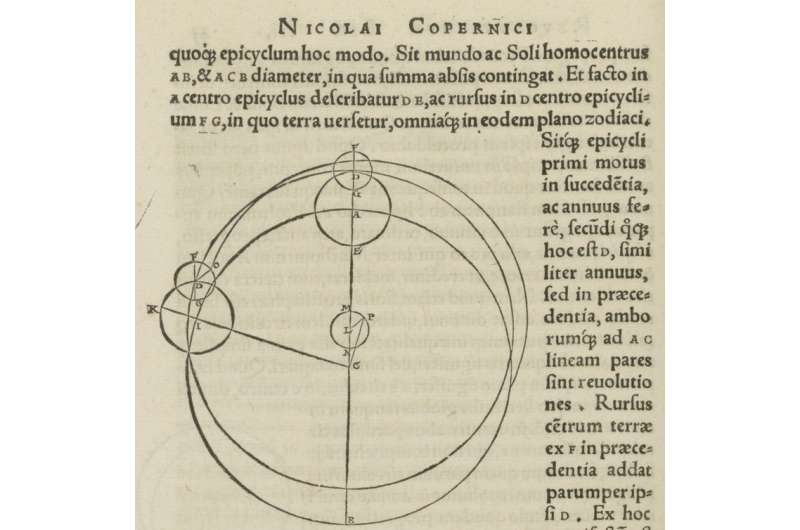


Connect the dots, and you'll draw either a loop or an open zigzag. Suppose you were to draw a dot on a sky map each night to show where Mars appears as it moves forward, goes through retrograde, and then resumes its forward motion. It's as if the two planets were on separate tracks that are a little tilted with respect to each other. Just to make things a little more odd, the orbits that Earth and Mars follow don't quite lie in the same plane. This apparent erratic movement is called "retrograde motion." The illusion also happens with Jupiter and the other planets that orbit farther from the sun. Then, as we move farther along our curved orbit and see the planet from a different angle, the illusion will disappear and we will once again see Mars move in a straight line. While we're passing by the red planet this year, it will look to us as though Mars is moving up and down. Earth has the inside lane and moves faster than Mars - so much faster, in fact, that it makes two laps around the course in about as much time as it takes Mars to go around once.Ībout every 26 months, Earth comes up from behind and overtakes Mars. We hope that we’ve managed to explain the nature of the retrograde motion phenomenon to you.The two planets are like race cars on an oval track. However, you now know that retrograde motion is just an illusion that can’t possibly affect your everyday life – at least from the scientific point of view. How do planets in retrograde affect us?Īstrologers may warn you against signing contracts during Mercury retrograde or buying metal tools during Mars retrograde. You can also view the planet’s location for any chosen date and time using the Time Machine feature. You will see the current position of the celestial body in the sky. Tap the magnifier icon in the lower-left corner of the screen, type the planet’s name in the search field, and tap the corresponding search result. If you’d like to follow the path of any planet in retrograde across the sky, use the stargazing app Star Walk 2. The following Solar System planets also go retrograde in 2023: The elusive planet Mercury will be moving “backwards” in the sky from April 21 to May 14, from August 23 to September 15, and from December 13 to January 1, 2024. Only in the 16th century, when Nicolaus Copernicus introduced his heliocentric model, scientists understood that retrograde motion was an illusion. However, their retrograde motion is hard to observe: when an inferior planet passes us by, it is positioned between the Earth and the Sun, so the Sun’s glare hides it from view.Īncient astronomers were rather puzzled by the retrograde motion phenomenon – especially those who thought that the Earth was at the center of the Universe. The inferior planets, Venus and Mercury, that orbit the Sun faster than the Earth, also periodically appear to move “backward”. This mechanism works for all the superior planets. The same thing happens when you pass by a slower-moving car on the highway – for a moment, it appears to move in the opposite direction. When we pass Mars, it seems to be moving “backward” because we're moving faster than it is.

This superior planet moves slower in its orbit than the Earth. Retrograde motion is an optical illusion caused by differences in the planets’ orbital speed. What causes the apparent retrograde motion of the planets? This westward movement is called apparent retrograde motion. This motion shouldn’t be confused with the daily motion of the planets and the Sun in the sky which goes from east to west and is caused by the Earth’s rotation on its axis.Īt specific periods of time, a planet can start moving “backward” – from east to west. Nicolaus Copernicus proposed his theory that the planets revolved around the sun in the 1500s. Astronomers call it direct or prograde motion. When a planet seems to reverse its direction in the sky, it’s called retrograde motion (from the Latin word retrogradus – "going backward").ĭay to day and week to week, as the Earth revolves around the Sun, the planets in the sky typically move in the same direction as the Sun – from west to east. See Infographic What does it mean when a planet is in retrograde? In 1512 Copernicus circulated a short commentary containing the essence of his new hypothesis: the Sun is the center of the solar system, the planets move around it, and the stars are immeasurably more distant. Want to know what causes the apparent retrograde motion of the planets? Check out this infographic to learn how retrograde motion works.


 0 kommentar(er)
0 kommentar(er)
